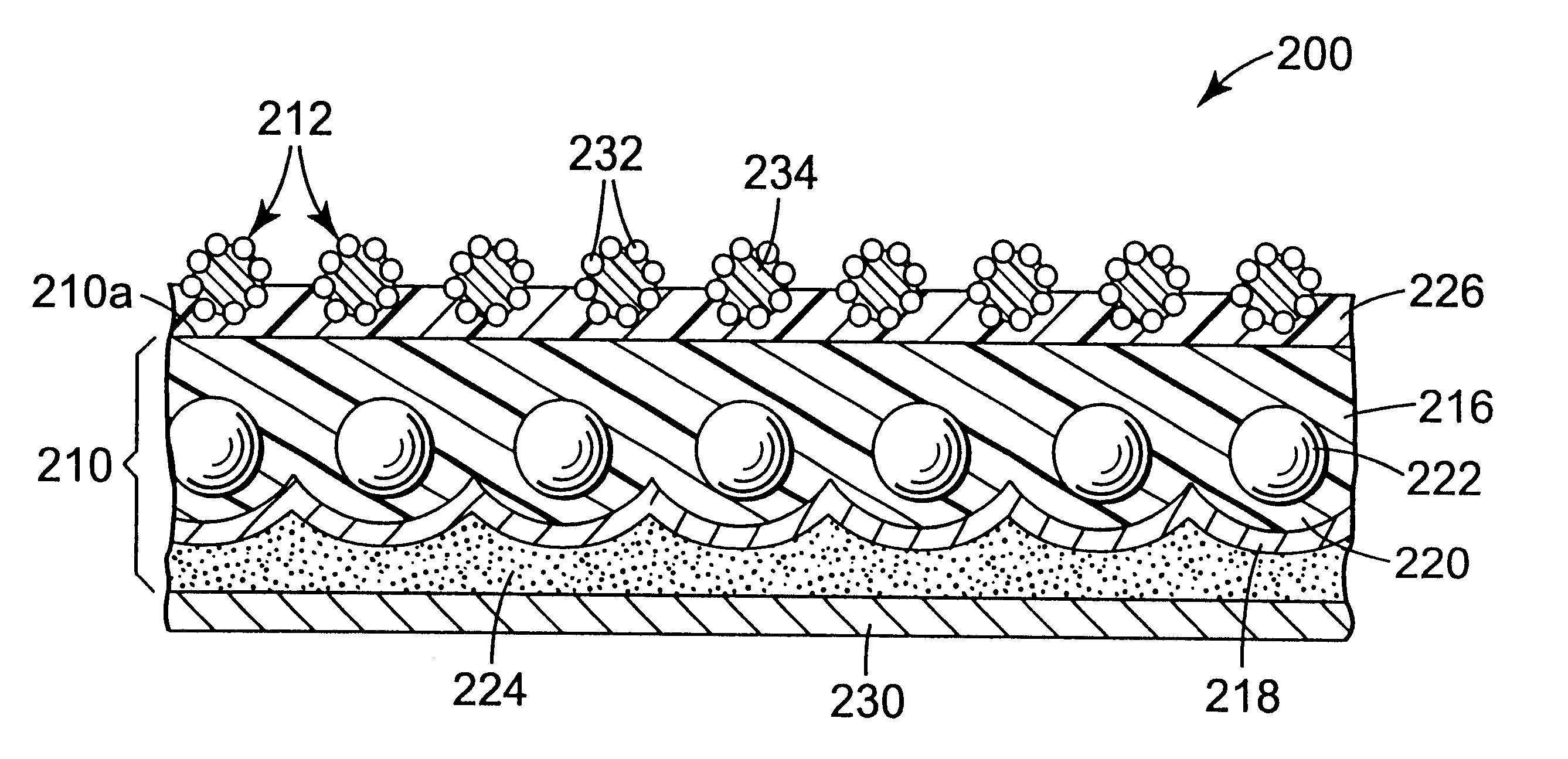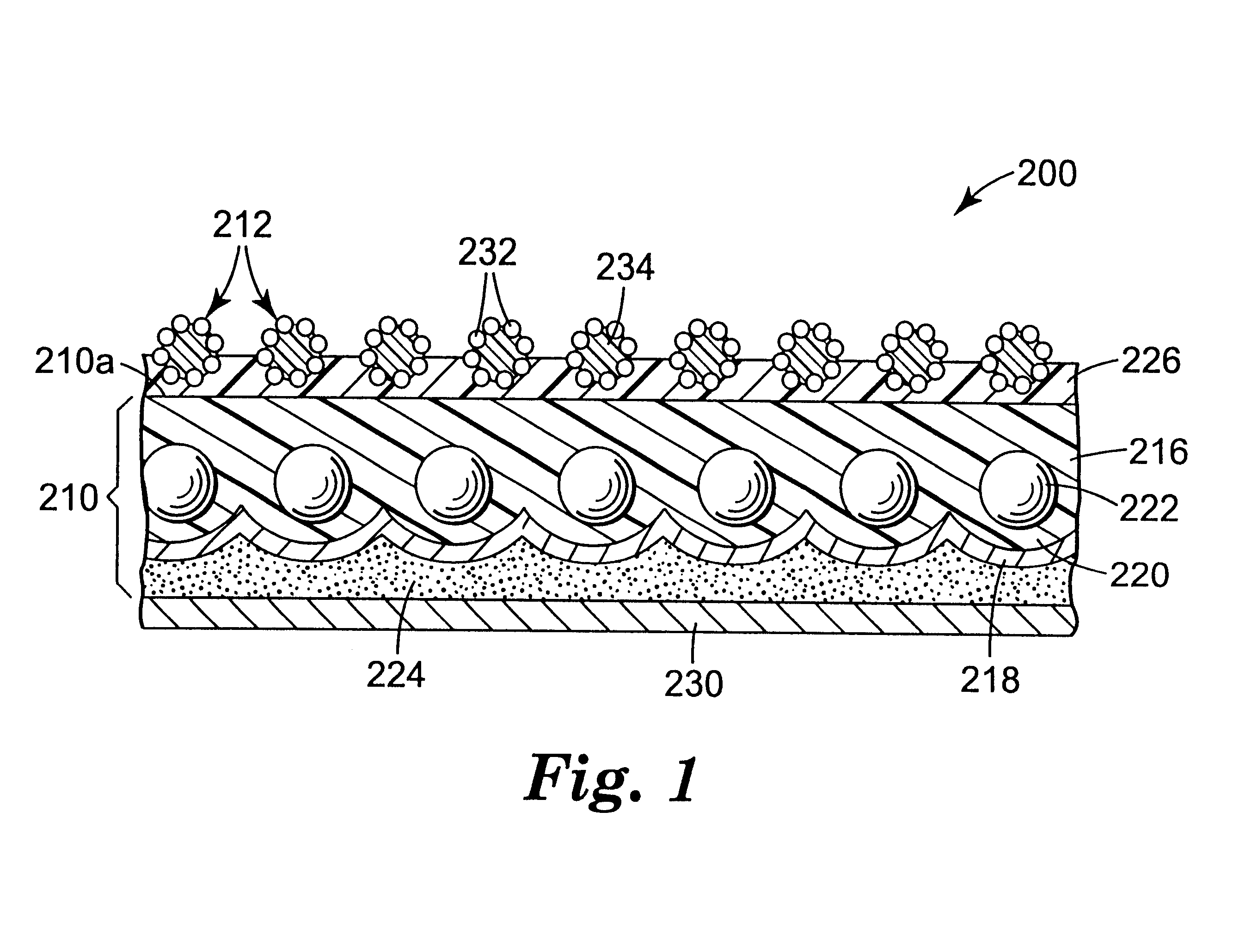Retroreflective article
a retroreflective and article technology, applied in the direction of roads, instruments, traffic signals, etc., can solve the problems of light refracting ability, much reduced retroreflective performance, and reduced retroreflective brightness
- Summary
- Abstract
- Description
- Claims
- Application Information
AI Technical Summary
Benefits of technology
Problems solved by technology
Method used
Image
Examples
examples
The invention will be further explained by the following illustrative examples that are intended to be non-limiting.
Retroreflectivity Measurements Under Dry and Dynamic Wet Conditions
Dry and wet coefficients of Retroreflected Luminance (R.sub.L) were measured for Examples 1-9 and Comparative Example A in accordance with ASTM E809 entitled Standard Practice for measuring Photometric Characteristics of Retroreflectors and ASTM D 4061-94 entitled Test Method for Retroreflectance of Horizontal Coatings.
In each case, the reflective articles to be evaluated were applied to flat aluminum panels and placed on a horizontal surface, to simulate a pavement marking applied to a road surface. R.sub.L was measured under dry and wet conditions at a simulated viewing distance of 30 meters. A Gamma Scientific Photometer Model 2009 (formerly Gamma Scientific now Advanced Retro Technology, Inc. Spring Valley, Calif.) with a Gamma Scientific Model RS-50 lamp was used to make the measurements. The obser...
examples 1-9
were prepared sprinkling various amounts of retroreflective elements to the bonding composition. Once the retroreflective elements were applied to the bonding composition, each sample was cured and dried in an oven at a temperature of about 260.degree. F. (127.degree. C.) for about 20 minutes.
TABLE 2 illustrates the amount of retroreflective element used in the various samples, along with the approximately surface area coverage of those elements. Skid resistance values, as measured by ASTM E303, are also reported. It should be noted that Comparative Example A represented the retroreflective sheeting with no retroreflective elements on the top surface of it, and corresponds to Sample 7 of TABLE 1.
Preferably, a minimum value of about 45 BPN to about 55 BPN is suitable for pavement marking applications. The data above illustrates an increase in BPN as the percent surface area of the article covered by the retroreflective elements is increased until an optimum is reached. A maximum valu...
PUM
| Property | Measurement | Unit |
|---|---|---|
| coefficient of retroreflective luminance | aaaaa | aaaaa |
| diameter | aaaaa | aaaaa |
| refractive index | aaaaa | aaaaa |
Abstract
Description
Claims
Application Information
 Login to View More
Login to View More - R&D
- Intellectual Property
- Life Sciences
- Materials
- Tech Scout
- Unparalleled Data Quality
- Higher Quality Content
- 60% Fewer Hallucinations
Browse by: Latest US Patents, China's latest patents, Technical Efficacy Thesaurus, Application Domain, Technology Topic, Popular Technical Reports.
© 2025 PatSnap. All rights reserved.Legal|Privacy policy|Modern Slavery Act Transparency Statement|Sitemap|About US| Contact US: help@patsnap.com


